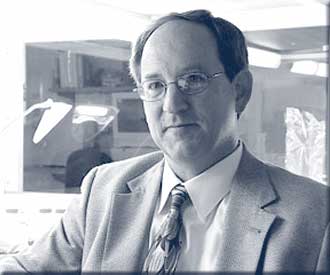Robert Horsch

As a plant biologist for Monsanto, Robert Horsch and two other colleagues published a paper about a soil bacterium, Agrobacterium tumefaciens, that detailed its natural genetic engineering abilities.
bacterium agrobacterium tumefaciens,robert horsch,soil bacterium,plant biologist,monsanto,genetic engineering,image image,colleagues
- ID: 15658
- Source: DNALC.DNAi
Related Content
15264. Using argobacterium to genetically engineer plants, Robert Horsch
Robert Horsch explains the mechanism by which agrobacterium delivers its DNA "parcel."
15266. Genetically engineering plants using agrobacterium, Robert Horsch
Robert Horsch talks about agrobacterium as a ready-made delivery system for getting foreign DNA into plants.
15267. Different methods of genetically engineering plants - Robert Horsch
Robert Horsch compares the random power of a gene gun with the natural genetic engineering abilities of agrobacterium.
15263. What is agrobacterium?, Robert Horsch
Robert Horsch talks about the parasitic nature of agrobacterium and the effect it has on the host plant.
15265. Plant transformation using the gene gun, Robert Horsch
Robert Horsch talks about the gene gun: a physical method of delivering genes into plant cells.
15158. Bridging evolutionary barriers, Robert Pollack
Renowned biologist and philosopher Robert Pollack reflects on his concern over the potential danger of Janet Mertz's experiment inserting a cancer-causing gene from a monkey virus into a bacterium that lives in humans.
15018. Outrage over recombinant DNA, Paul Berg
Paul Berg's student, Janet Mertz, planned an experiment that would recombine DNA from a monkey virus with DNA from a bacterium that lives in the human gut. Berg describes colleague Bob Pollack's outrage at this.
15556. Telomeres
An image of telomeres. Courtesy of Robert Moyzis, University of California, Irvine, CA; U.S. Department of Energy Human Genome Program
10397. Program of the 8th annual meeting of the American Breeders Association (1)
Program of the 8th annual meeting of the American Breeders Association (1)
16395. Animation18: Bacteria and viruses have DNA too.
Joshua Lederberg worked with bacterial genetics while Alfred Hershey showed that DNA is responsible for the reproduction of new viruses in a cell.












